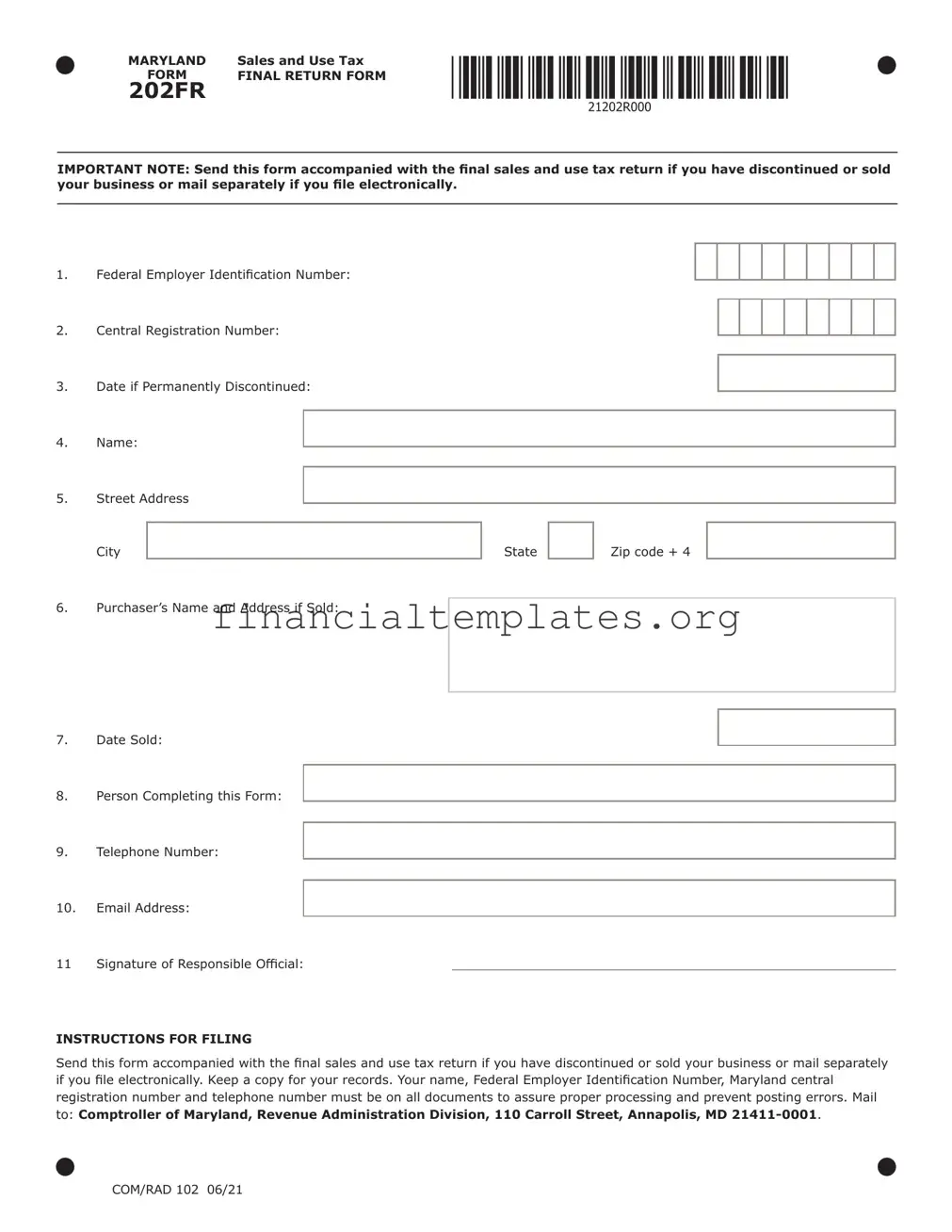The Uniform Sales & Use Tax Exemption/Resale Certificate – Multijurisdiction Form is one document similar to the Maryland Sales and Use Tax 202 form. Both serve crucial roles in the sales and use tax process, facilitating businesses in the transaction of goods and services. While the Maryland form is specific to declaring the final sales and use tax for businesses ending operations, the Multijurisdiction Form allows businesses to purchase goods for resale without paying sales tax upfront across different states. Each requires detailed business identification information, like the Federal Employer Identification Number and specific instructions for their use to ensure compliance with tax laws.
Another comparable document is the California Sales and Use Tax Return Form. Similar to Maryland's version, this form serves as a means for businesses to report and pay taxes on sales and use within the state. Both forms require the business's sales information, including gross sales, and deductions to calculate the tax owed. They are vital in ensuring businesses meet their tax obligations timely, thereby avoiding penalties and interest. Additionally, both forms demand accurate business identification numbers to ensure the correct processing of tax payments and returns.
The New York State ST-100 Sales and Use Tax Return shares similarities with Maryland's form by requiring businesses to file periodically based on their taxable sales and purchases within the state. Each form plays a pivotal role in the collection of taxes that fund state operations and services. They both necessitate detailed transaction records, including taxable and nontaxable sales, and apply adjustments for accurate tax reporting. By providing a structured means for tax reporting, these forms ensure state compliance and support the equitable collection of taxes from businesses operating within their jurisdictions.
The Texas Sales and Use Tax Return, similarly, mandates businesses to report their taxable sales and calculate the tax owing. Both the Texas and Maryland forms are integral to the state's ability to gather needed revenue for public services. They require businesses to detail their sales activities, applying appropriate tax rates and deductions. The forms serve as a formal record of sales and use tax liability, which is critical for both state budget planning and business financial management.
Finally, the Virginia Retail Sales and Use Tax Return is akin to the Maryland 202 form by requiring businesses to account for their sales and the corresponding tax. Both documents are essential for state tax administration, providing a pathway for businesses to report taxes on goods sold or used within the state. Each form includes sections for the reporting of gross sales, taxable sales, and the calculation of the tax due, underpinned by the necessity of accurate business identification information to ensure proper account reconciliation with the state’s revenue department.

